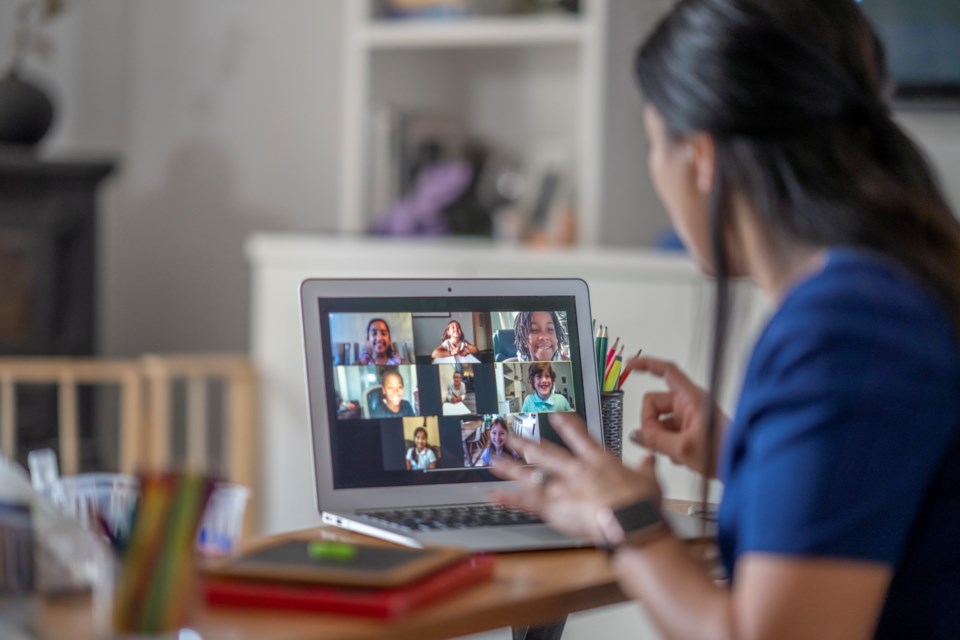One of the many changes COVID-19 brought those in education was an almost immediate switch to online learning.
Overnight, institutions scrambled to keep education moving, while bridging the physical distance between teacher and learner. Traditionally trained teachers made valiant efforts to adjust to digital by recording lessons, posting videos and creating breakout rooms, using whatever technology they had available.
These efforts resulted in digitally mediated physical classrooms using the internet — not online education.
While these two options sound the same, . Bridging physical distance through technology alone doesn’t address additional adjustments required to address learner needs. Posting materials online, recording lectures and discussions themselves don’t create a coached, collaborative and supported learning environment.
So what have we really learned about online education? And what do we do now?
Online learning isn’t new, and lessons can be drawn from existing research and experience. Athabasca University — where we are all professors — pioneered the world’s first online MBA, M.Nursing and M.Ed progams over 28 years ago. And today, its one of Canada’s .
The highlights four distinct aspects of online learning that should stick post-pandemic: learning to learn online, designing online teaching with purpose, blending space and time online and continued disruption with AI.
1. Learning to learn online
The pandemic highlighted that fail to address student needs. Younger learners may seek physical spaces to promote socialization, with supervision and teacher-led content delivery. Others, like Athabasca’s mostly adult learners, value the convenience of connecting with classmates and instructors online during times of their choosing.
Common inequities like poor access to the internet, lack of financial resources and needed digital competence plague online learning. However, facing geospacial barriers to traditional classrooms, and further issues of inequality are addressed via multi-modal distance education, financial support structures and orientation to .
Emergency online education used blunt-edged instruments, . The pandemic response emphasized the importance of preparing all students to learn, whether online or in a physical classroom.
2. Designing online teaching with purpose
Quality teaching and learning design must incorporate active, engaging roles for individual students, whether designed for .
Meaningful teaching varies by setting and requires . Online course and teaching design is that fosters active learning.
Producing effective online course materials involving both instructors and skilled course developers and takes months rather than weeks. Course materials are painstakingly detailed, and include writing everything the instructor would expect to say in a physical classroom, clearly describing all course requirements and linking students to readings, video and online resources.
Because of the pandemic, instructors had to translate classroom delivery into technology-mediated delivery — it worked for some, but was not easily tailored to unique learning needs.
Technological tools, combined with independent and joint working opportunities, should be brought back to the physical or hybrid classroom in conjunction with online pedagogical approaches that increase active, collaborative learning and learner-generated choices.
3. Blending space and time online
Pandemic education popularized the vocabulary of “synchronous” and “asynchronous” learning. Synchronous replicated physical classrooms through real-time, digitally mediated teaching, while asynchronous meant working independently, usually with materials designed for a physical classroom. Moving forward we need to think about how timing and presence impacts learning.
At Athabasca, students come together in time and space through . Instructors coach students individually at a student led pace.
This is different from traditional undergraduate classrooms, where students absorb material on a fixed schedule. Our graduate programs use paced programming, requiring students to work independently while regularly coming together in active online discussion.
More flexible teaching allows students to receive instructor support when they need it. Building in synchronous, collaborative learning allows for reflection, rather than real time responses.
4. COVID-19 began the disruption, AI will continue it
The pandemic revealed how education approaches can change after instructors had to search for innovative ways to improve student learning outcomes outside the physical classroom.
At Athabasca, a allowed us to introduce a co-op program in the middle of a pandemic.
Students accessed a simulated work experience in a paced structure, irrespective of location. They were able to practise working as a team, problem solving, conflict resolution, ethical reasoning and leadership while working on an assigned project. Students received immediate, detailed feedback from an AI coach, allowing for extensive experimentation and revision to master concepts honed in reflective discussion with the instructor.
that adopting online and AI tools needs to be deliberate, coupled with supportive digital infrastructure and highly responsive student support. Planned carefully and taken together, these steps improve on traditional approaches by making education truly open, accessible and inclusive.
Now, the question for all educators should be: How do we capitalize on COVID-19 initiated change to build better education systems for the future?
![]()
Deborah Hurst receives funding from RBC and CPA to build and launch the AI powered virtual cooperative program.
Janice Thomas received funding from the Project Management Institute for earlier research projects exploring the professionalization of project management, the value of project management to organizations, and the implementation of project management as a management innovation.
Martha Cleveland-Innes has received funding from, and acts in support of, the Social Sciences and Humanities Research Council. She is an appointed member of the Athabasca University Board of Governors.
F. Haider Alvi does not work for, consult, own shares in or receive funding from any company or organisation that would benefit from this article, and has disclosed no relevant affiliations beyond their academic appointment.



